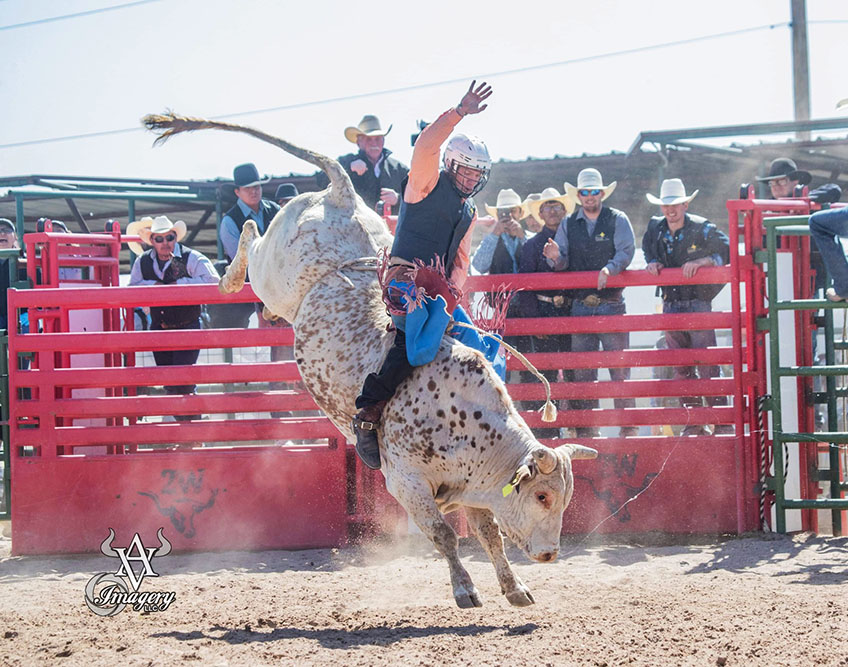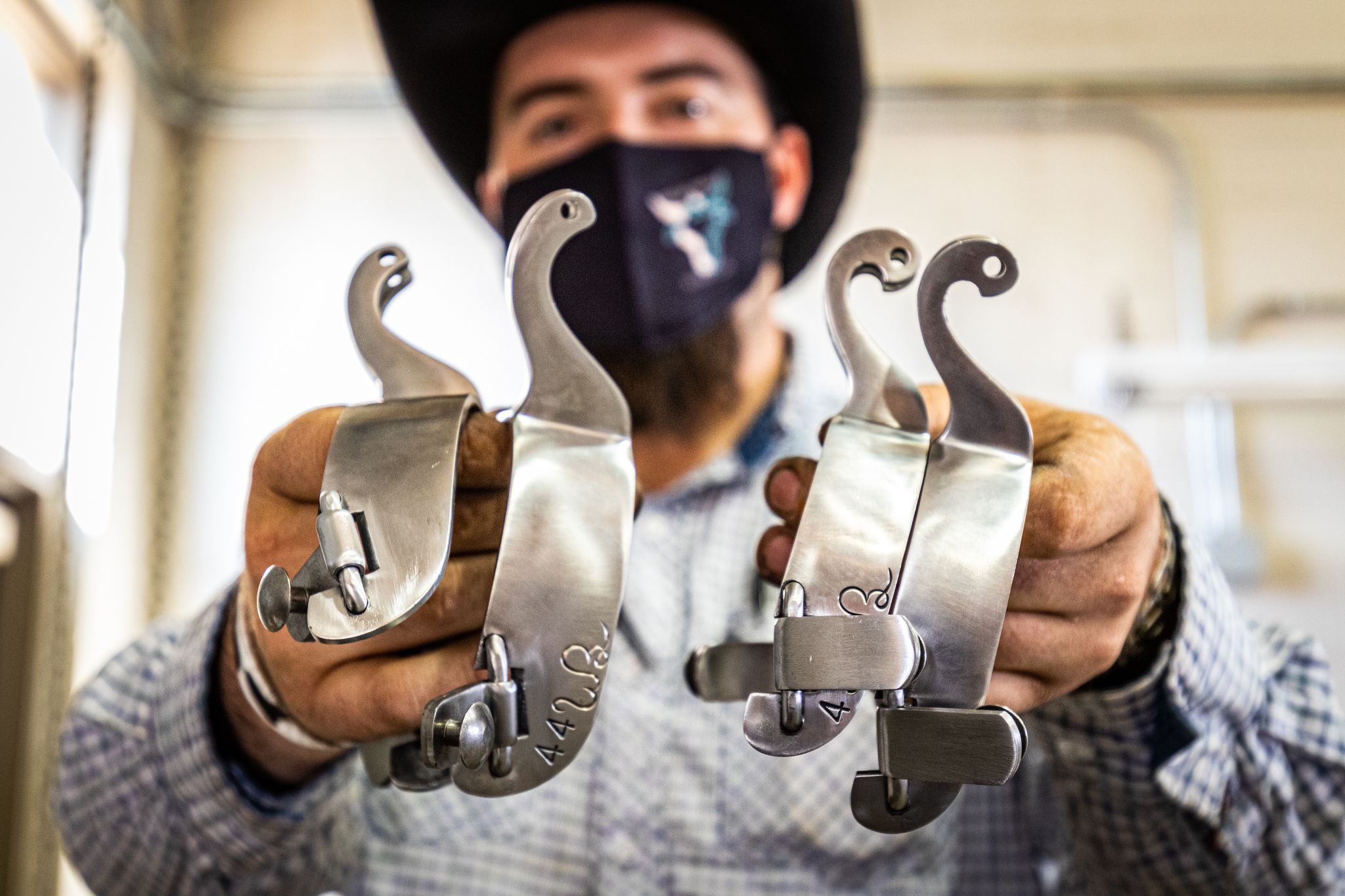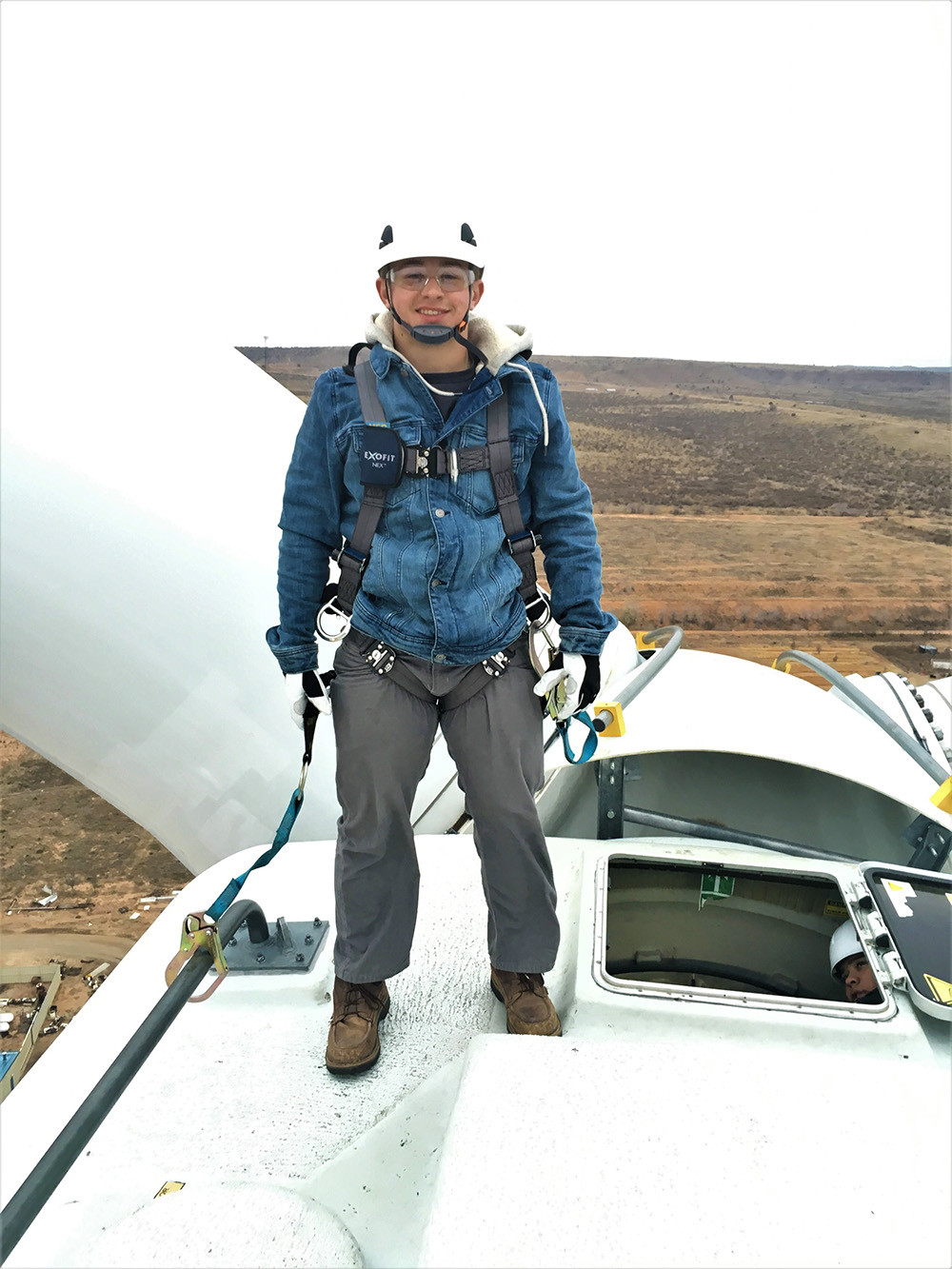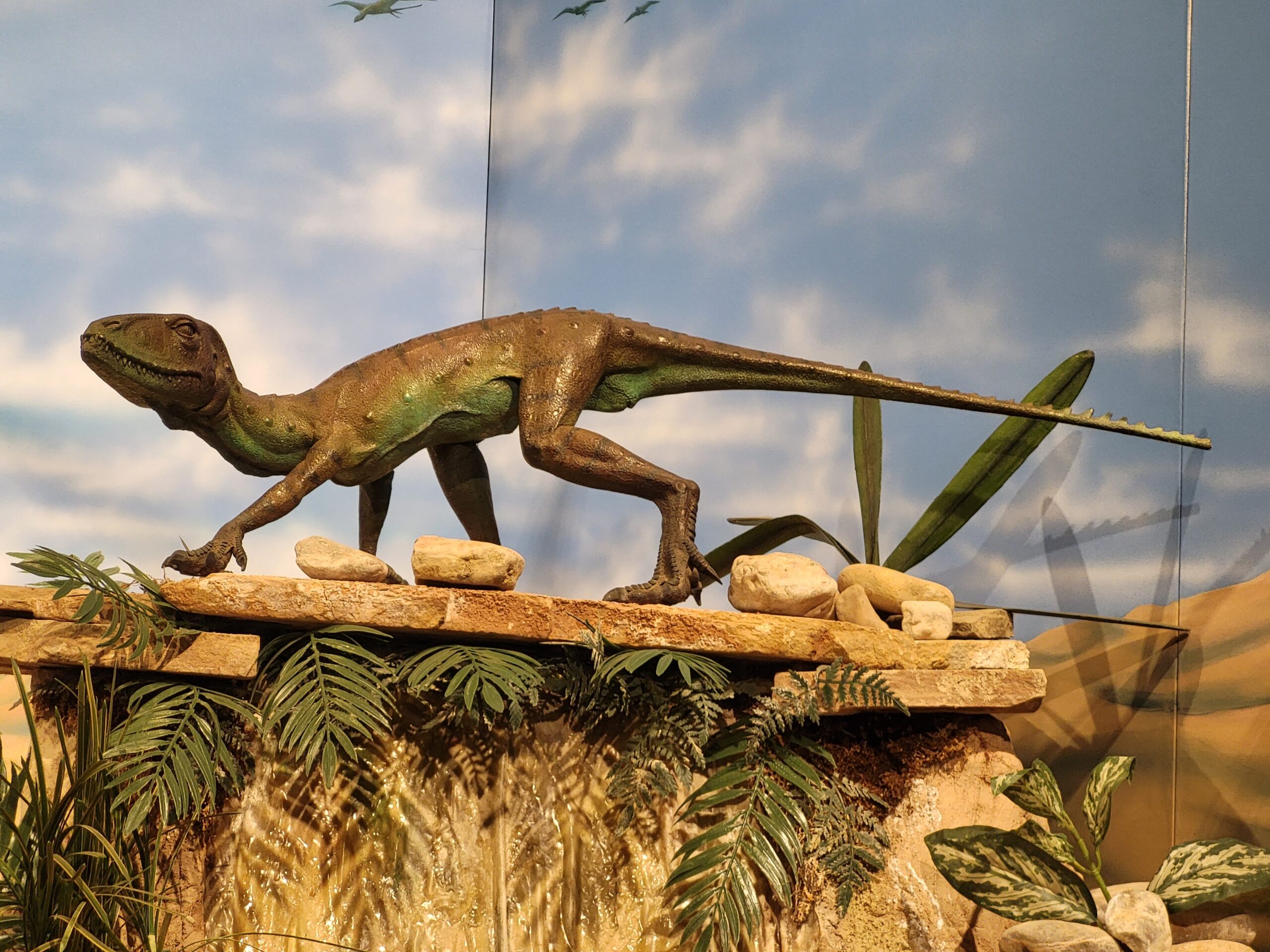
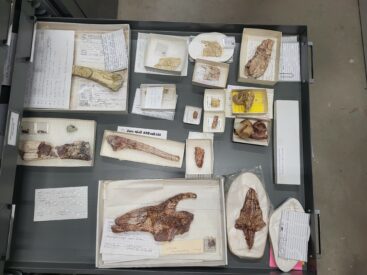
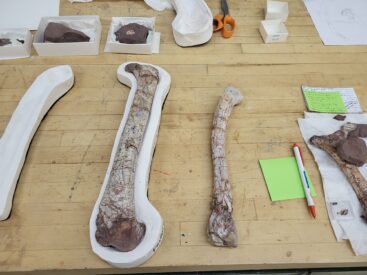
- Mesalands Paleontology Professor, Dr. Axel Hungerbuehler, discovered new fossils on the Quay County caprock
- One is a femur believed to be from a Late Triassic ancestral crocodile, while the other is a femur from an undetermined dinosaur
- The bones were successfully reconstructed this week after being excavated over the summer
- Large crocodylomorph fossils have been found in the Llano Estacado and other areas of the United States, but it whether this is a entirely new subspecies remains to be determined
March 13, 2023 – Dr. Axel Hungerbuehler, Professor of Paleontology at Mesalands Community College, and field class students discovered new fossils on the edge of the caprock in Quay County. The specimen of primary interest was determined to be a left femur or thigh bone. It was an unusual find due its size and a deep natural groove crossing the lower end of the bone. The indentation is a characteristic not found in many animals from the Late Triassic period, and indicates that the bone was identified as belonging to a large ancestral crocodile.
While the femur was initially found during the summer, the preparation was completed this past week. During the excavation process, bones are typically found in a fragile or fragmented state. Paleontologists then have the painstaking process of gluing the pieces back together. A second even larger femur was found next to the ancestral crocodile bone, but due to erosion on a key part of the fossil, it cannot be determined with certainty to what animal it belonged to. Dr. Hungerbuehler was then left with fragments of that bone which couldn’t be fully reconstructed.
Basal crocodylomorphs, or ancestral crocodiles, evolved into the modern crocodiles we know today. Dating back to the Late Triassic and Early Jurassic, findings in North America, South America, and Europe have indicated almost all of these were small terrestrial animals. Predecessors including rauisuchians and poposaurids were thought to have already been extinct, however, there is scant evidence that larger forms of ancestral crocodiles could have existed during this time. While this defies the current knowledge about the species, programs such as the Mesalands Paleontology Department are working to find an answer.
Throughout the 17 years of excavation on the Llano Estacado site, several fossils referable to a large variety of basal crocodylomorph have been found. Mesalands Students of the field class Paleontology Field Discovery managed to uncover a hip bone (ilium), 3 armor plates, and another femur bone, though the latter wasn’t as well preserved as the most recent discovery. Other sites in North America have also surfaced large ancestral crocodile specimens. A juvenile skeleton missing a skull was found at Northern New Mexico’s Ghost Ranch, while skull bones, 2 vertebrae, and a limb bone were found in North Carolina. Even so, no fully intact specimen of the large version of the species has been retrieved.
With bones from large ancestral crocodiles only appearing in average every 2 years on the Quay County caprock, Dr. Axel Hungerbuehler joked it would take more than a century to put a reasonably complete specimen together. If and when a full specimen of the larger crocodylomorph is retrieved, they would certainly be the top predator on land of the time period. A reconstruction of a similar sized relative, the rauisuchian Postosuchus, can be seen at the Mesalands Dinosaur and Natural History Museum.


